Southern Thai Mats – Sard Jood
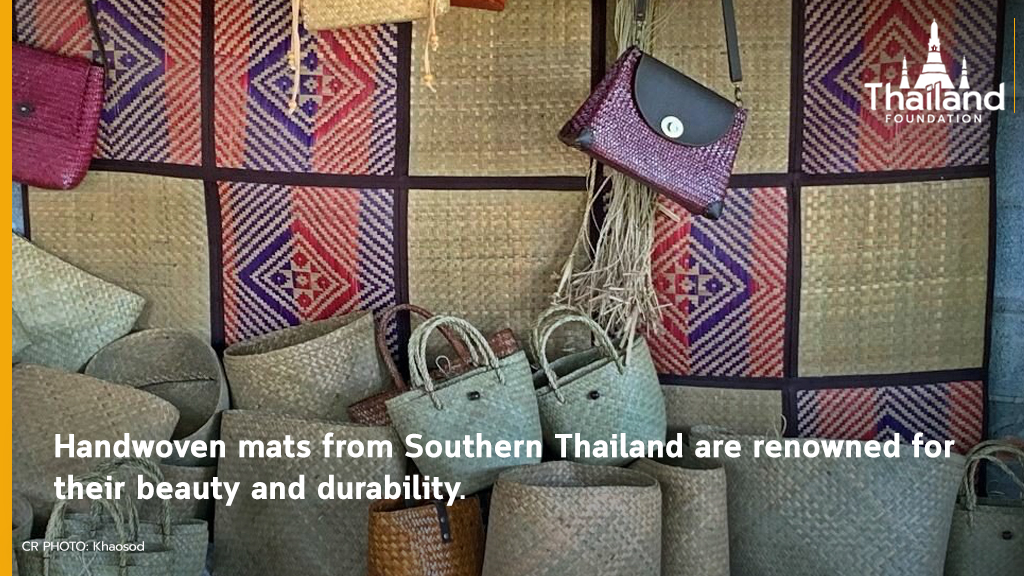
Southern Thai mats or sard jood [สาดจูด] are products of Thai Southerners’ innovativeness. They are famous through Thailand for their beauty and durability. The level of intricacy and attention that goes into making these mats is truly deserving of appreciation. Furthermore, the skills and techniques of sard jood weaving can also be applied to making other forms of craftworks.
What are Southern Thai Mats
Southern Thai mats or sard jood is made from the leaves of the krajood [กระจูด] or Lepironia articalata plant, in the Sedge family. The mats are of high quality, both in terms of durability and aesthetic details. Originally, they were of plain color. As time went on, however, not only were colors added to them, but the mats themselves were adapted and made into many different products.
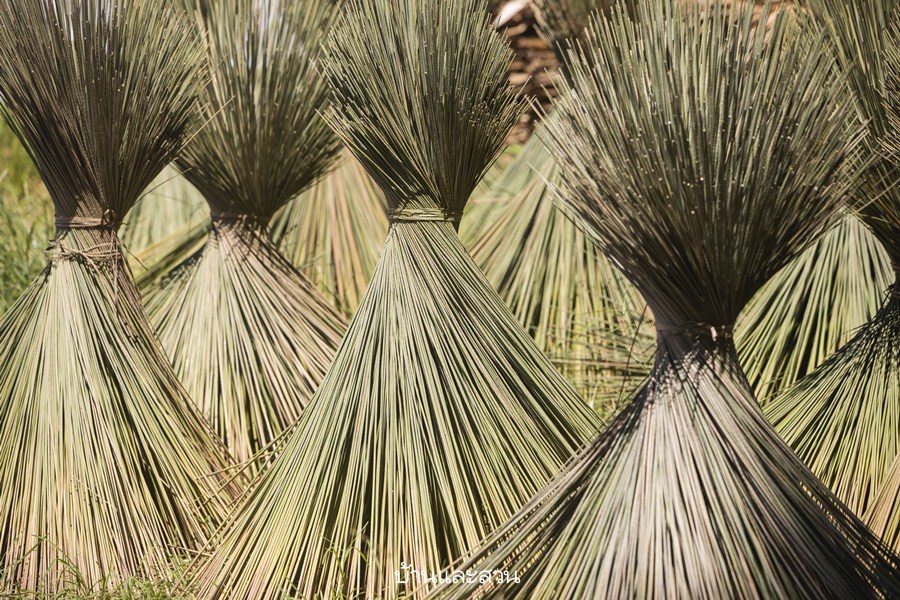
(Photo credit: https://www.baanlaesuan.com/96152/crafts/varni)
What Makes a Good Mat?
A good sard jood must be intricately weaved, without any defects. All components used to make the mats must be of good quality, from the krajood leaves and adhesives to the dye and stitching materials. The mat, as a whole, must be intact and durable. All the stitches must be uniform. The edges should be void of any sharp twigs that might prick the user. If the mats contain dyed leaves the colors must be vibrant and without smudges. Weavers must also make sure the dye is well-dried, or else the colors may leave marks the users’ skin. On the other hand, if the mats are undyed, their natural beige color must possess no blemishes. Furthermore, the mats should not emit any unpleasant odors.
How Is it Made?
The making of the Southern Thai mats is a very detailed and meticulous process. It starts off with harvesting the suitably aged krajood that is long enough in size, tugging on it with the right amount of pressure, and then coating them with white mud. After that, the leaves are sundried for 2-3 days and then ironed with a machine-less ironing method. Ironing the leaves this way keeps the texture soft and therefore easier to weave, while machine ironing methods will result in flat but crispy leaves that will be harder to work with. The leaves are then dyed and hand-weaved into mats as well as other craftworks. All finished products are lacquered to ensure strength and create a glossy texture.
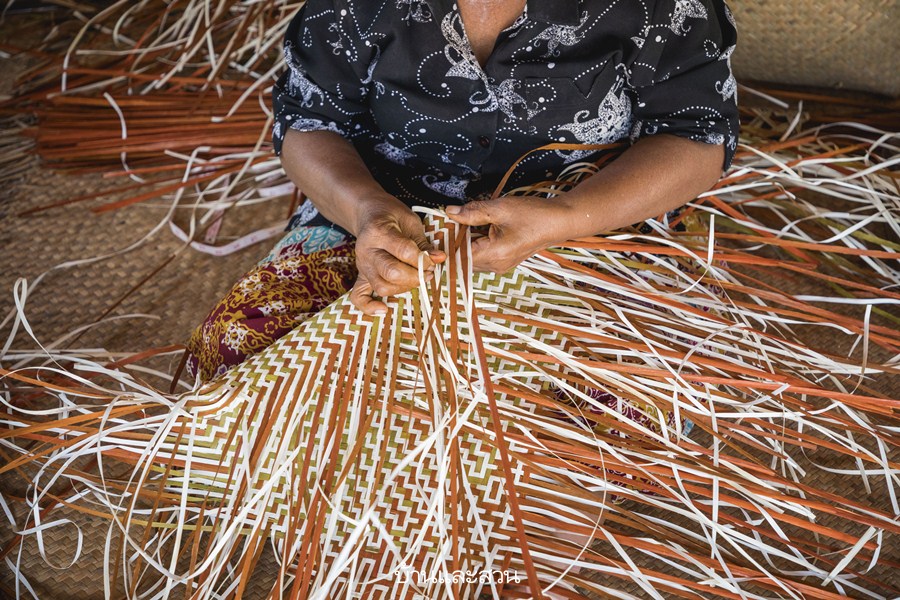
(Photo credit: https://www.baanlaesuan.com/96152/crafts/varni)
Types of Sard Jood
Traditional Sard Jood: There are 2 different types of traditional Sard Joods:
- The mats, or “Sard Jood” propper.
The mats are used for practical purposes or incorporated into aesthetic décor in different parts of the house, such as the bedroom and the living room. They can also be made into partitions for traditional Southern Thai wooden houses or into multipurpose sacks called kra sob [กระสอบ].
There are three popular patterns found in Southern Thai mats: Lai kad [ลายขัด], Kad song [ลายขัดสอง] and Kad sam [ขัดสาม]. Later on, the weaving patterns of the sard jood evolved into patterns of nature such as animals, leaves and flowers. All patterns can be grouped into two main categories:
-
- The Muslim patterns produced by Muslim communities mimic patterns we see in nature. Muslim craftsmen do not weave patterns that resemble humans or animals due to Islamic regulations. The craftsmen, however, would represent people and animals through symbols. Each pattern has a name derived from the traditional language of the place from which it originated.
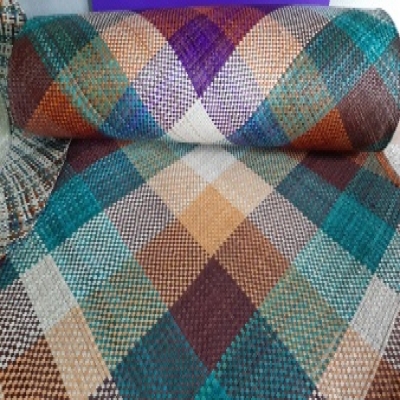 (Photo credit: https://www.otoptoday.com/view_product.php?product_id=12092)
(Photo credit: https://www.otoptoday.com/view_product.php?product_id=12092)
-
- The Buddhist patterns were developed from classical Southern Thai craft patterns such as Lai look kaew [ลายลูกแก้ว] Lai dok jun [ลายดอกจันทร์] Lai karn tor dok [ลายก้านต่อดอก] Lai dao lom deun [ลายดาวล้อมเดือน]. Some patterns look similar to the Muslim patterns but have different names. Buddhist craftsmen have no religious restrictions in artistic expressions, thus they tend to be more liberal in designing pattern.
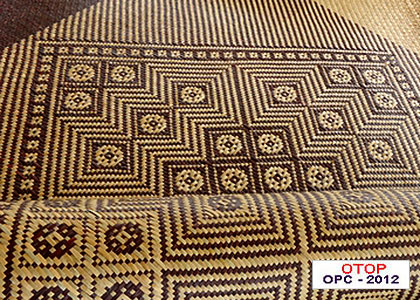 (Photo credit: http://www.thaitambon.com/product/141211524)
(Photo credit: http://www.thaitambon.com/product/141211524)
- Evolved products.
These products came when government officials suggested to local craftsmen that sard jood weaving skills can also be applied to make other products that are appealing to the market. These new products are made to fit the needs of the new generation. There are 3 types of evolved sard jood products:
(1) Products created through incorporating sard jood outer layer on a frame of thick paper, fabric, leather, or other synthetic products.
(2) Products created from sard jood frame. This type of product derives its strength from the structure of weaving patterns.
(3) Products created through the adaptation of sard jood other creative ways.
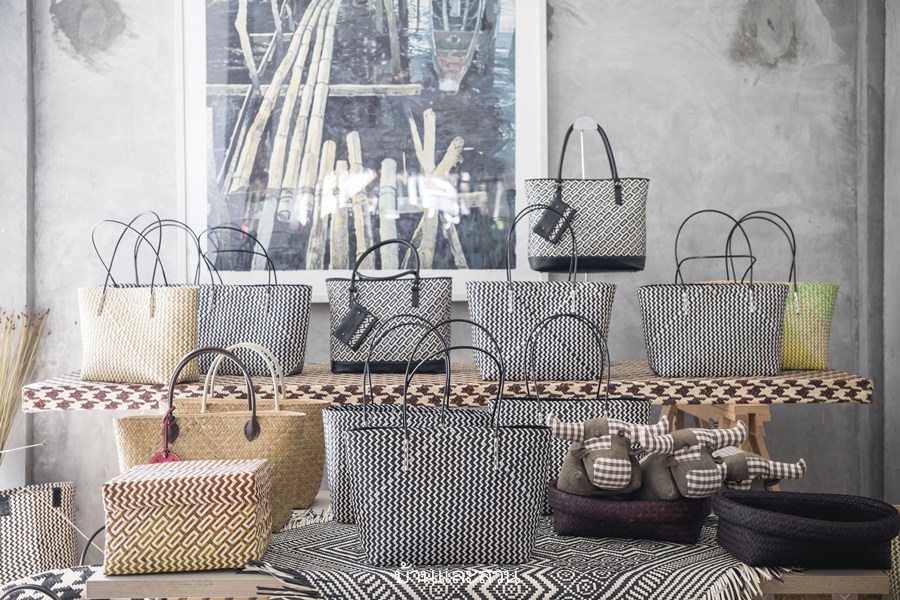 (Photo credit: https://www.baanlaesuan.com/96152/crafts/varni)
(Photo credit: https://www.baanlaesuan.com/96152/crafts/varni)
Sard Jood Today
The sard jood industry today is flourishing, brining income to local craft communities in Phatthalung, Surat Thani, and Narathiwat provinces. The reason that sard jood products are gaining more traction is because of the global environmental conscious trend. This results in craft communities finding new ways to adapt the mats into even more types of products, such as handbags, baskets, iPad cases, tissue boxes. Basically, almost anything that can be made with hard plastic can be replaced with this green product. The communities are also looking for ways to improve the products such as finding sustainable ways to keep them from growing mold and mildew.
Southern Thai mats reflect many characteristics of the Thai people. Resourcefulness is the first quality, since these mats were originally made with plants that grow on their own in the area. The people have found a way to use this local resource to create everyday items, not to mention other creations that are made from the mats themselves. Delicacy is the second characteristic that is apparent. Every single step of making the mats and derived products are done by hand. The skills and techniques used in making these craftworks can only come from people to possess great attention to detail and tenderness in their hearts. The third characteristic openness. This is apparent in the ability to adapt and apply the mats into different forms of design and function without losing the core appeal of the craft.
Sources:
- https://www.youtube.com/watch?v=bDawd_TWUVw
- http://otop.dss.go.th/index.php/en/knowledge/informationrepack/342-wicker-handmade-from-krachut?showall=&start=7
______________________________________________________________________________
Author: Worada Elstow
Editor: Tayud Mongkolrat
June 24, 2022


